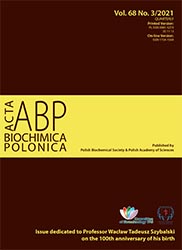Evaluating the antibacterial activity of muramyl dipeptide derivatives, retro-tuftsin derivatives, and anthraquinone oligopeptides against a range of pathogenic bacteria
Abstract
Search for new and efficient antibiotic is crucial because of microbial drug resistance and problems with side effects of the administered medication. In this study, we evaluate the in vitro microbiological activity of muramyl dipeptide derivatives, retro-tuftsin derivatives (i.e., tuftsin with reversed amino acid sequences), and combinations of retro-tuftsin derivatives with substituted anthraquinones. The potency of the investigated derivatives towards methicillin-sensitive Staphylococcus aureus (MSSA), methicillin-resistant Staphylococcus aureus (MRSA), Pseudomonas aeruginosa, Escherichia coli, and Klebsiella pneumoniae ESBL (extended-spectrum β-lactamases) was compared based on the spectroscopically-measured minimal inhibitory concentrations (MIC values). The bacterial growth have also been studied with different concentrations of compounds. Statistical analysis of the results revealed that certain modifications lead to promising activity against S. aureus (anthraquinone analogue – 3c and retro-tuftsin derivative – 2b), while other derivatives exhibit activity against P. aeruginosa (muramyl dipeptide derivative – 1d and retro-tuftsin derivative – 2b). The obtained results of microbiological activity indicate that the structure of the tested compounds may be the basis for further modifications.
Acta Biochimica Polonica is an OpenAccess quarterly and publishes four issues a year. All contents are distributed under the Creative Commons Attribution-ShareAlike 4.0 International (CC BY 4.0) license. Everybody may use the content following terms: Attribution — You must give appropriate credit, provide a link to the license, and indicate if changes were made. You may do so in any reasonable manner, but not in any way that suggests the licensor endorses you or your use.
Copyright for all published papers © stays with the authors.
Copyright for the journal: © Polish Biochemical Society.


